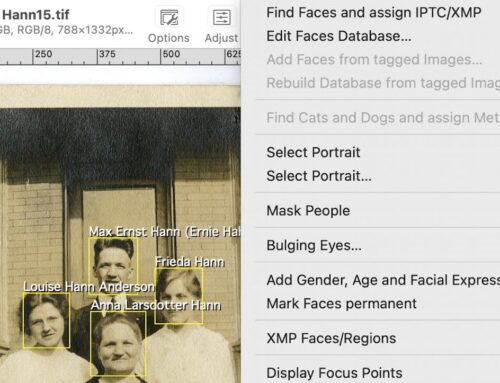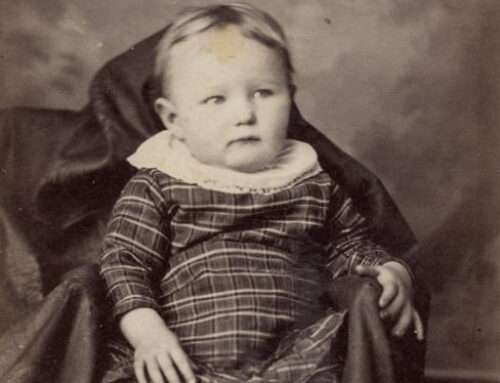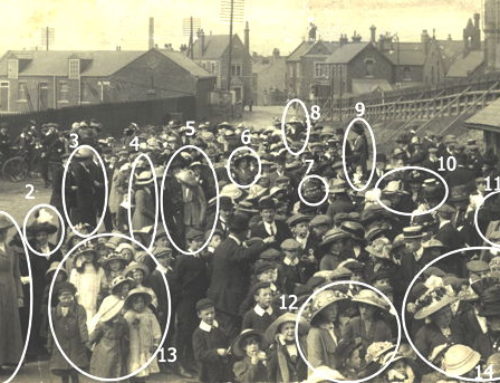Looking for the best scanners for genealogy research? Let’s review the types of scanners that best suit your family history research.
High-end scanners costing thousands, found at libraries and archives, of course produce amazing images. And most multi-function home printers include scanners that produce decent enough quality. But what if your needs lie somewhere in the middle?
Let’s take a look at first at scanners to avoid. Then you’ll find recommendations for the latest in scanning technology suited to your particular genealogy research.
Scanners to Avoid
I get the willies seeing handheld scanners or roller-feed scanners touted as portable solutions. These are not scanners for genealogy research in my professional archivist’s opinion. These scanners cause frictional damage to (often fragile) originals. And the digital images produced, often stitched together by software, are mostly of mediocre quality for genealogy research purposes. So please do not buy or use handheld or sheet-fed scanners.
Portable Scanners for Genealogy Research
 Life moves quickly and technology moves even faster. There are now portable choices for flatbed scanners and book scanners for genealogy research.
Life moves quickly and technology moves even faster. There are now portable choices for flatbed scanners and book scanners for genealogy research.
The best portable flatbed scanner keeps dropping in price and adding features. The Canon CanoScan Lide 400 Slim Scanner, (at left), is available at Amazon for $89 at the time this post was written.
Portable/Desktop Book and Album Scanners
Overhead scanners (aka planetary scanners) are designed to capture digital images of bound books, scrapbooks, and oversized documents. They essentially combine a mounted camera and good lighting to take photographs.
To combine portability and the ability to scan bound volumes, here is my new recommendation:
CZUR Aura-B Book & Document Scanner
- Portable at 3.3 pounds
- Scans up to 11.7 x 16.5 inches (A3)
- 4320 x 3240 ppi (pixels per inch)
- Cabled connection to laptop or desktop
- Scanning software for Windows or MacOS
- Scans flat documents and photographs
- Software flattens book curves for scanning bound books and photo albums
- Faster than flatbeds
- LED lighting to eliminate glare
- OCR software converts JPGs into editable document formats in 186 languages
CZUR has many, many models in their line. The Aura-B is their low-to-mid-range that retails for $289; on sale at Amazon from time to time at $245.65.
If you want to spend more, you get more bells and whistles. The CZUR ET line is higher-end, featuring higher-resolution cameras, more lighting, wireless features, and more advanced OCR and page-flattening software. The CZUR ET18 Pro Professional Document Scanner retails for $525 (on sale around $450 from time to time). One level down is the CZUR ET16-P Professional Book & Document Camera Scanner with essentially the same features at $425.
The CZUR Shine500-Pro High-Speed Document Camera is their entry-level model, clocking in at $99. (But you get what you pay for.)
Desktop Scanners for Genealogy Research
Have a big scanning project at home that mostly consists of photographs? Try the Epson Perfection V600 Color Photo, Image, Film, Negative & Document Scanner.
 6400 x 9600 ppi for enlargements up to 17″ x 22″
6400 x 9600 ppi for enlargements up to 17″ x 22″- Built-in Transparency Unit to scan slides and negatives as well as photos
- DIGITAL ICE technology removes appearance of tears and creases in images
- Optical character recognition using ABBYY FineReader Sprint Plus OCR for scanned documents
- Weighs 9.0 lb, Dimensions: 11″ x 19″ x 4.6″
The quality of scanned photographs is truly excellent from this personal scanner. If you have a large number of photographs, this is the model to choose.
Scanners for Genealogy Research Recap
- For portability on projects consisting of photographs, choose the Canon CanoScan Lide 400 Slim Scanner.
- For portability and/or for projects primarily consisting of bound printed volumes or albums, choose one of the CZUR models above.
- For projects at home primarily consisting of color or black-and-white photographic prints, slides, transparencies, and negatives, choose the Epson model above.
Additional Considerations
Note: Keep in mind that technology progresses quickly. If being portable is important to you, you could be trading up every few years. Newer portable models with more features will arrive for about the same cost.
Also note: you may not be able to take a portable scanner with you into institutional research rooms. Complex gift terms, copyright and licensing agreements govern scanning. Archivists are not blocking access to users, but abiding by prevailing regulations.
Scanning and Organizing Your Family Photos
Need help creating a workflow to scan and organize your family photos? Try my ebook, Cataloging Digital Family Photographs. Once your new scanner arrives, this genealogy ebook will help you scan, caption, label, and organize your digital family photos once and for all.
Note: this post contains affiliate links, so we may earn a small commission when you make a purchase through links on our site at no additional cost to you.







[…] Consider your hardware. Recommendations for scanners for genealogy research available at this link. […]
I think you’ll be happy with it. Very stable and the quality can’t be beat.
The android app CamScanner Full is very easy to use, but I think I am going to take your advice and try the Canon CanoScan LiDE 700F Color Image Scanner.
thanks for sharing your experience..
Am using Android app CamScanner Full and am very satisfied with both ease of use and results.
Thanks, Jennifer. I agree, especially for things you only have one chance to scan, that the flatbed is the way to go.
Excellent recommendations. After tenuously carrying my large Epson scanner on a few scanning trips, I am reluctant to do so again. I agree that the two most recommended hand held scanners have limited uses and believe they should not be used for creating quality digital images.